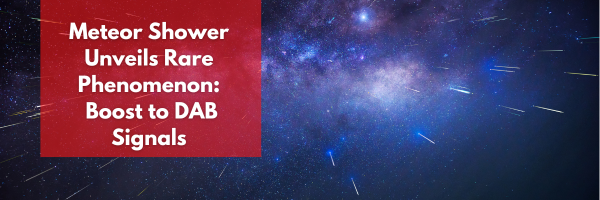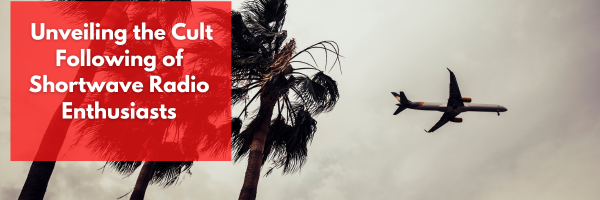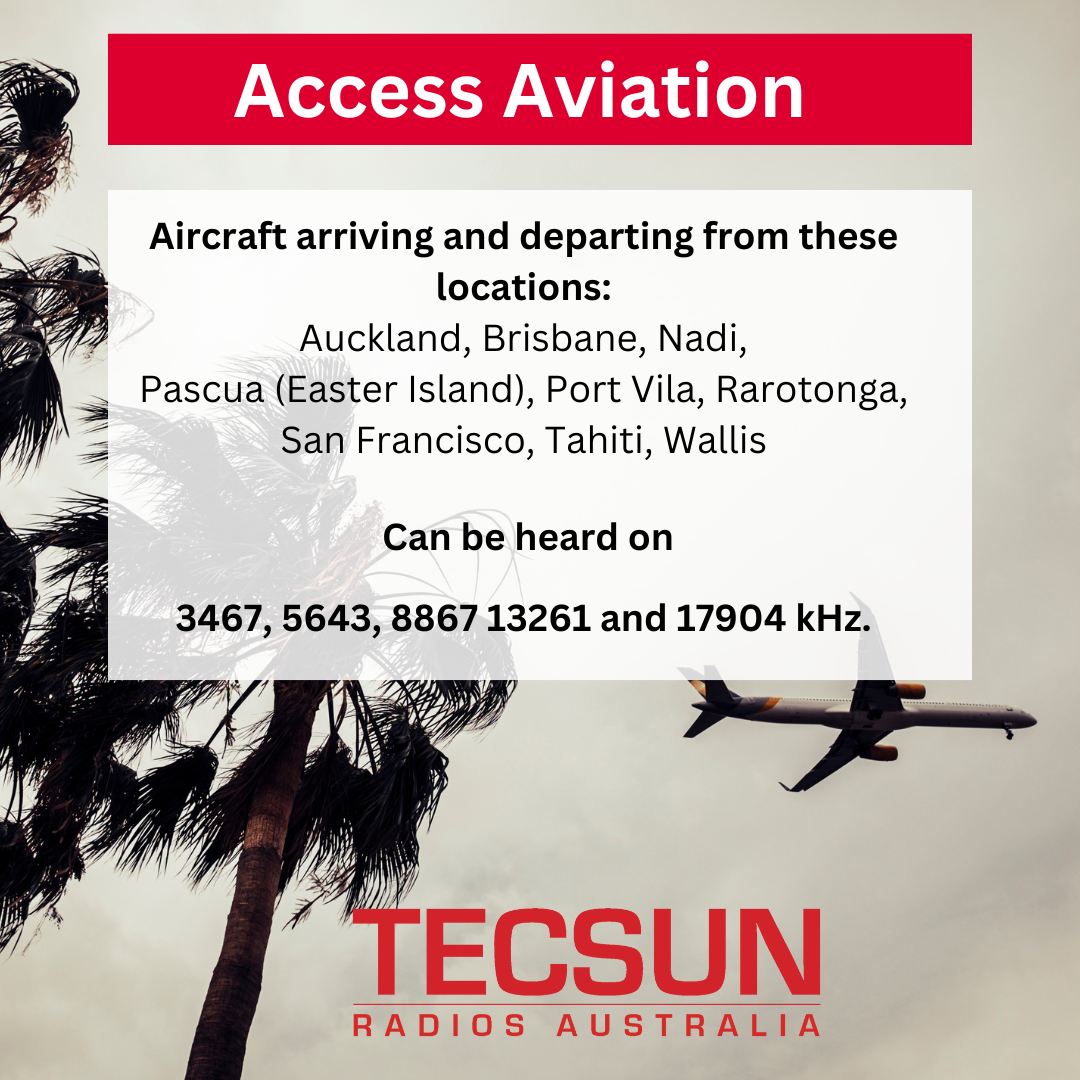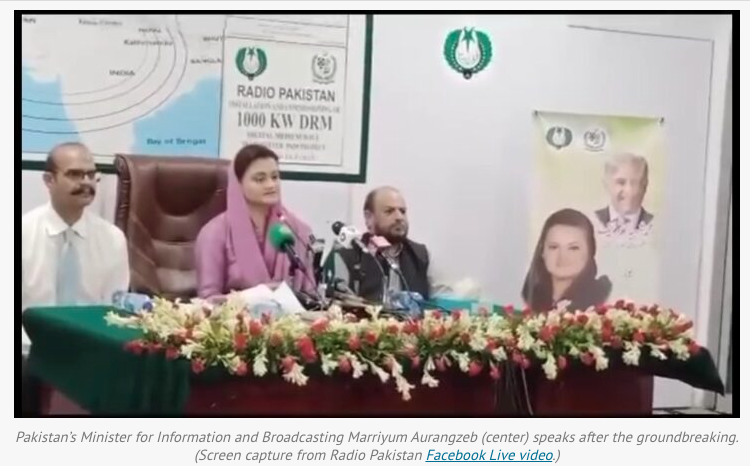
The night sky often looks incredible, but on the night of August 12, 2023, one Finnish DX (long-distance radio) enthusiast, Koe Kone, experienced an unexpected twist during the annual Perseids meteor shower. While gazing at the streaking meteors, Kone discovered a boost in German DAB (Digital Audio Broadcasting) signals, marking the first-ever documented instance of meteor-induced interference on VHF band III DAB signals.
Koe Kone, a dedicated DX hobbyist based in Turku, Finland, enjoys the challenge of seeking out distant broadcast signals. His YouTube channel showcases a treasure trove of recordings capturing broadcasts from across the Baltic Sea and beyond. However, it was during the meteor shower’s peak activity that Kone stumbled upon a radio phenomenon that had eluded detection until now.
The notion that atmospheric and celestial conditions can influence radio broadcasting is not a novel one. For decades, radio enthusiasts have observed the impact of meteor showers on radio signal propagation. Differences in the ionosphere between day and night have been known to affect the reach of AM signals, while temperature inversions in the troposphere can cause FM signals to ‘skip’ to distant markets.
As early as the 1930s, researchers recognised that meteor showers played a role in radio signal propagation. Enthusiasts and amateur radio operators have even used FM receivers to eavesdrop on meteor showers.
Kone’s groundbreaking discovery was made possible through his use of an Airspy Mini scanner and QIRX SDR software for signal reception. He paired these tools with a formidable 13-element VHF band III yagi antenna positioned at a lofty 48 meters above sea level. This setup allowed Kone to successfully receive and decode a signal emanating from a German multiplex operating in block 5C.
Intriguingly, Kone’s decoded stations led him to identify five potential transmission sources in Germany: Casekow, Pritzwalk, or Templin in Brandenburg; Röbel, Rostock, or Züssow in Mecklenburg–Vorpommern; and Garz on the picturesque island of Rügen, also situated in Mecklenburg–Vorpommern. Astonishingly, the closest of these sites is approximately 800 kilometers (nearly 500 miles) away from Kone’s reception site in southwestern Finland.
During the peak of his listening experience on August 12, Kone’s receiver displayed three adjacent DAB multiplexes on blocks 5B, 5C, and 5D. Although he couldn’t decode all the signals, he did capture brief bursts from blocks 5C and 5D in the early hours of August 11.
Sharing his discovery with the “DAB/DAB+ Digital & Online Radio” Facebook group, Kone reflected on his past successes in capturing Swedish DAB stations. However, the meteor shower recording was different. He noted, “This in the video was quite different, being a meteor scatter and lasted only a few seconds.”
Koe Kone’s discovery serves as a testament to the wonders that can be unveiled when technology, passion, and the mysteries of the cosmos converge. The meteor-induced boost to DAB signals not only adds a new layer of intrigue to the world of DX enthusiasts but also reminds us of the possibilities to discover. As we continue to explore the radio spectrum, who knows what other cosmic secrets may await discovery in the silent spaces between the stars?

In a world dominated by modern technology and instant communication, there exists a unique and passionate community of shortwave radio enthusiasts who find their thrill in tuning into aviation broadcasts. While it might seem like an esoteric hobby, listening to aviation broadcasts over shortwave radio has cultivated a cult following
Here are some of the reasons so many listeners follow the HF aircraft band.
Kind of like a global adventure!
Shortwave radio allows enthusiasts to embark on a global adventure from the comfort of their homes. Aviation broadcasts provide a portal into the skies, enabling listeners to eavesdrop on conversations between pilots and air traffic controllers from all corners of the world.
The sense of adventure and the opportunity to virtually traverse continents is a compelling reason why shortwave radio enthusiasts are drawn to aviation broadcasts
Shortwave radio provides real-time access to aviation communications. Enthusiasts can listen in on air traffic control exchanges, weather information, flight paths, and even emergency communications as they happen.
It is quite technical!!
Fine-tuning shortwave radios and antennas to receive clear aviation signals is a technical challenge that appeals to hobbyists. It requires skill and patience to optimise reception and achieve the best audio quality.
The technical aspect of the hobby fosters a sense of accomplishment and expertise, further deepening the enthusiast’s connection to shortwave radio.
Amateurs listening in during an emergency have saved the day in the past, both in the air and by sea!!
Shortwave radio is a reliable means of communication during emergencies. Aviation enthusiasts play a vital role in monitoring aviation frequencies during critical situations, potentially assisting authorities or providing essential information.
This sense of responsibility adds a noble dimension to the hobby, reinforcing the dedication of shortwave radio enthusiasts.
There is quite a community too!!
While shortwave radio listening can be a solitary activity, it also nurtures a strong sense of community. Enthusiasts connect through online forums, clubs, and social media groups, where they share their experiences, knowledge, and tips.
The sense of camaraderie among like-minded individuals contributes significantly to the cult following of this hobby.
For some, listening to aviation broadcasts on shortwave radio is a tradition passed down through generations. The nostalgic element, combined with the heritage of the hobby, creates a sense of continuity and connection to the past.
Listening to aviation broadcasts over shortwave radio may seem like a niche hobby, but it offers a world of adventure, technical challenges, and a close-knit community that has earned it a dedicated cult following.
Vast areas of the world lack the necessary local VHF radio communication systems needed to provide reliable radio coverage between aircrews and air traffic controllers. The lack of VHF coverage within most of these areas is due to the very remote location of these regions, for example, much of the airspace over the Atlantic and Pacific oceans lacks VHF communications as it is impossible to install transmitters on a reliable platform within these regions. As a result, a network of shortwave (HF) frequencies have been allocated to provide long range voice communications between aircrews and ATC facilities.
 The allure lies in the ability to bridge the gap between the terrestrial and the celestial, allowing enthusiasts to soar through the skies without ever leaving their homes. So, whether you’re a seasoned shortwave radio enthusiast or a curious newcomer, consider giving aviation broadcasts a try – you might just find yourself captivated by the mesmerising world of shortwave radio and its passionate following.
The allure lies in the ability to bridge the gap between the terrestrial and the celestial, allowing enthusiasts to soar through the skies without ever leaving their homes. So, whether you’re a seasoned shortwave radio enthusiast or a curious newcomer, consider giving aviation broadcasts a try – you might just find yourself captivated by the mesmerising world of shortwave radio and its passionate following.
Here at Tecsun Radios Australia we have the best range of radios to support your shortwave listening adventures, we even supply a comprehensive shortwave listening guide, written by owner and fellow enthusiast, Garry himself!!!
Curious about listening to Aviation broadcasts, here are some of our top radios for the job.
PL-880, PL-990x, H-501x, PL-330, PL-365, PL-368, PL-660, S-2000. Most receivers in the Tecsun Radios Australia range have the ability to receive single sideband (SSB) transmissions, and that is the mode used by aircraft on the HF bands. As you can see, even the most economical receiver (PL-365) is capable of listening to aircraft on the HF bands.

In a momentous stride toward enhancing its broadcasting capabilities, on July 30, 2023, Radio Pakistan embarked on the groundbreaking ceremony for an expansive transmission facility, poised to connect the diverse tapestry of nations spanning from the Mediterranean to the Pacific.
The heart of this transformative endeavor revolves around the installation of a cutting-edge 1,000 kW Digital Radio Mondiale (DRM) transmitter at the eminent Radio Pakistan high-power transmission complex, strategically situated near the capital city of Islamabad. This monumental project comes with a price tag of approximately 4 billion rupees (nearly US$14 million) and is slated for completion by the year 2025.
Central to this project’s significance is its alignment with the Digital Radio Mondiale standard, which is a monumental leap into the digital age for Radio Pakistan. This groundbreaking move underscores Radio Pakistan’s commitment to modernization, leveraging state-of-the-art technology to usher in a new era of broadcasting excellence.

Image via https://www.radioworld.com/
Guiding this landmark occasion was the honorable Federal Minister for Information and Broadcasting, Marriyum Aurangzeb. Aurangzeb highlighted the pivotal role that this initiative would play in expanding Radio Pakistan’s reach, resonating across 52 nations spanning South Asia, Central Asia, the Far East, Middle East, and even Eastern Europe.
Quoting her words:

It’s worth noting that Radio Pakistan, since its inception in 1947, has primarily relied on analog medium, and shortwave transmitters. However, this transformational project acknowledges the changing tides of technology. Out of its current inventory of 20 transmitters, 14 have outlived their utility. This forward-thinking initiative is set to redefine broadcasting norms by empowering Radio Pakistan to transmit up to four distinct signals concurrently with remarkable efficiency. Moreover, the energy-efficient design of the 1,000 kW DRM transmitter is expected to reduce energy consumption by an impressive 33%, subsequently leading to substantial savings in operating costs.
Beyond the transmitter’s exceptional capabilities, Marriyum Aurangzeb revealed another ambitious plan that aligns seamlessly with the government’s vision. A new media city is poised to take shape in Rawat, complementing Prime Minister Shehbaz Sharif’s visionary commitment to bolstering investment in information technology and media technologies. This holistic approach aims not only to cultivate enhanced employment opportunities but also to actively engage the youth with the captivating world of radio.
As the groundbreaking ceremony set the wheels in motion for this transformative endeavor, Pakistan takes a bold step toward shaping the future of broadcasting. With the fusion of tradition and modernity, the country’s rich tapestry of culture, identity, and communication is set to resonate across borders, reaffirming the enduring power of the airwaves to unite, inform, and inspire.
This article was reproduced by Tecsun Radios Australia from the original article posted on https://www.radioworld.com/


